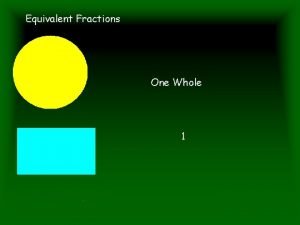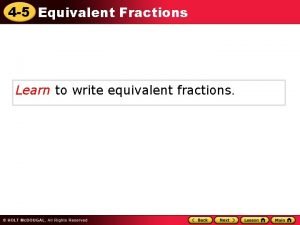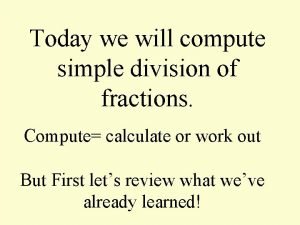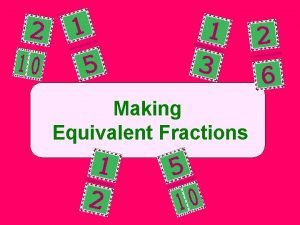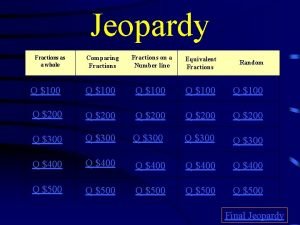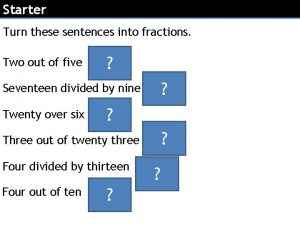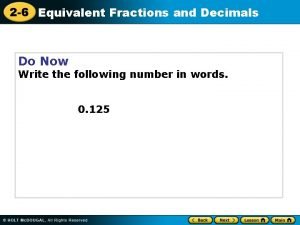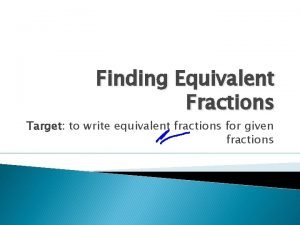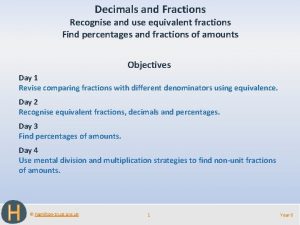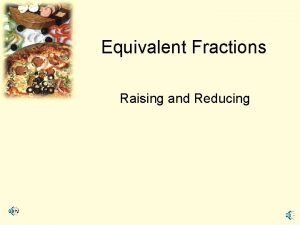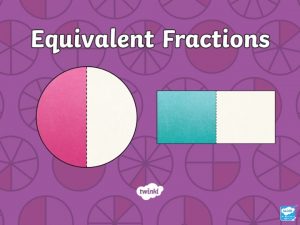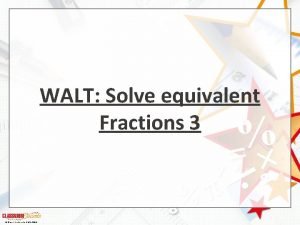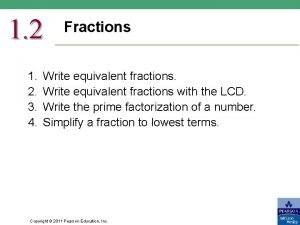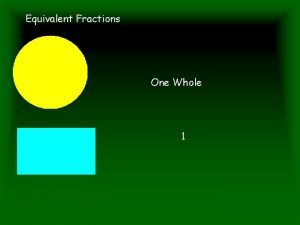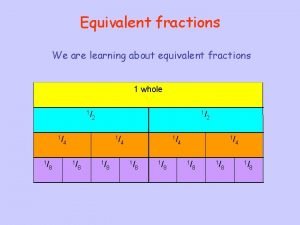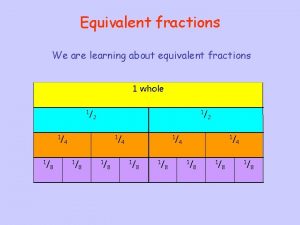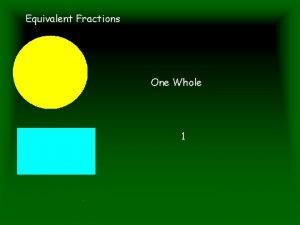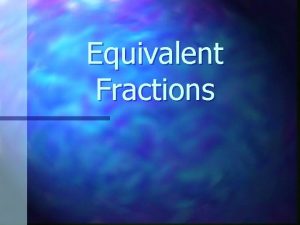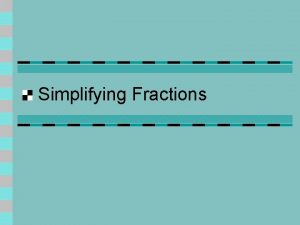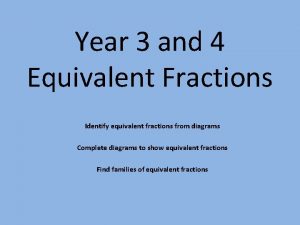1 2 3 4 Fractions Write equivalent fractions


















- Slides: 18

1. 2. 3. 4. Fractions Write equivalent fractions with the LCD. Write the prime factorization of a number. Simplify a fraction to lowest terms. Copyright © 2011 Pearson Education, Inc.

Fractions Numerator Part Denominator Whole

Equivalent Fractions ∙ 2 ∙ 3 ∙ 2 ÷ 3

Factors: Expressions that are being multiplied. Prime number: A natural number that has only 1 and the number itself as factors. 2, 3, 5, 7, 11, 13, 17, 19, 23, … Prime factorization: A factorization that contains only prime factors. 1, 2, 3, 4, 6 and 12 are factors of 12. Prime factorization of 12 is 2 ∙ 3.

Find the prime factorization of 20. Factor Tree Factor Tower Divide by prime numbers! 2, 3, 5, 7, 11, …

0, 2, 4, 6, 8 259: 372: 23 + 57 + 92 = 16 12 5, 10, 15, 20, … 10, 20, 30, 40, …

Find the prime factorization of 60. Factor Tree Factor Tower

Find the prime factorization of 48. Factor Tree Factor Tower

Find the LCD. Using Multiples 6: 6, 12, 18, 24, 30, 36, 42, 48, 54, 60 10: 10, 20, 30, 40, 50, 60 LCD = 30 Use when numbers are small.

Find the LCD. Using Prime Factorization 2∙ 3 LCD: 2∙ 3 ∙ 5 2∙ 5 = 30

Find the LCD. Using Multiples 12: 12, 24, 36, 48, 60 9: 9, 18, 27, 36 LCD = 36

Find the LCD. Using Prime Factorization 2∙ 2∙ 3 3∙ 3 LCD: 2∙ 2∙ 3 = 36

Write the fractions as equivalent fractions with the LCD: 24 ∙ 3 ∙ 2

Write the fractions as equivalent fractions with the Suggestion: 2∙ 2∙ 3∙ 3 LCD: 2∙ 2∙ 3∙ 3 = 144 ∙ 9 ∙ 4

Reduce Fractions. Using Prime Factorization Using Greatest Common Factor GCF: 3 3 4

Reduce Fractions. Using Greatest Common Factor GCF: 6 5 7 Using Prime Factorization

Reduce Fractions. GCF: ? Using Greatest Common Factor: 10 Common Factor: 2 11 119 Using Prime Factorization

At a company, 225 of the 1050 employees have optional eye insurance coverage as part of their benefits package. What fraction of the employees have optional eye insurance coverage? ÷ 5 ÷ 3 Answer 3 out of 14 employees have optional eye insurance.
 Equivalence of 1/2 and 2/4
Equivalence of 1/2 and 2/4 Equivalent fractions to 4/5
Equivalent fractions to 4/5 Division
Division How to multiply equivalent fractions
How to multiply equivalent fractions Fractions jeopardy
Fractions jeopardy Unit 1 lesson 3 equivalent fractions and multipliers
Unit 1 lesson 3 equivalent fractions and multipliers Equivalent fractions multiplication chart
Equivalent fractions multiplication chart Equivalent fractions of 2/10
Equivalent fractions of 2/10 Equivalent fractions starter
Equivalent fractions starter 2/6equivalent fractions
2/6equivalent fractions Math jeopardy fractions
Math jeopardy fractions What is the equivalent fraction of 3 by 5
What is the equivalent fraction of 3 by 5 Equivalent fractions investigation
Equivalent fractions investigation Pizza equivalent fractions
Pizza equivalent fractions Success criteria for equivalent fractions
Success criteria for equivalent fractions What is a multiplier in fractions
What is a multiplier in fractions Equivalent fractions odd one out
Equivalent fractions odd one out Which is larger
Which is larger 48 prime factorization
48 prime factorization
